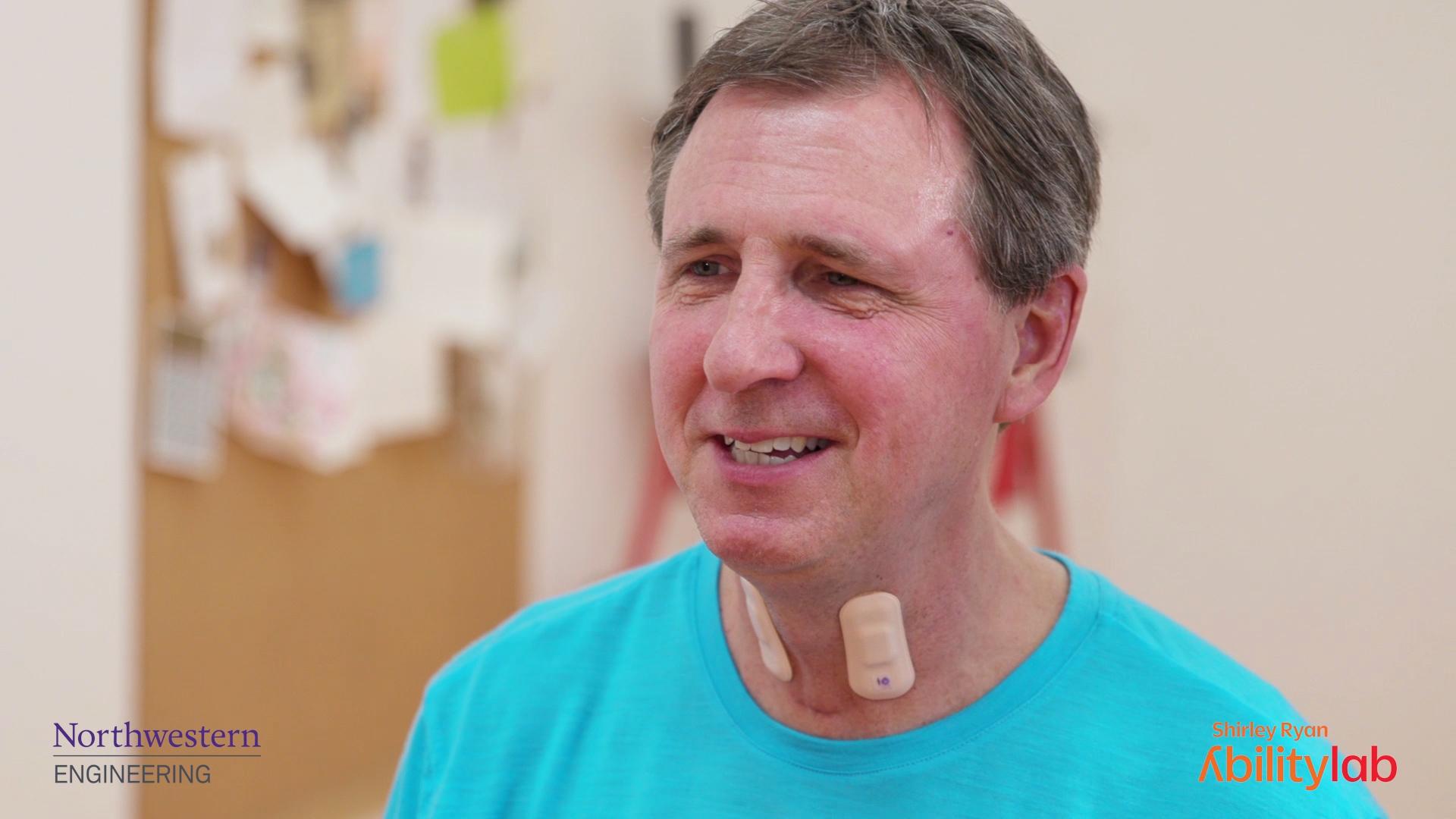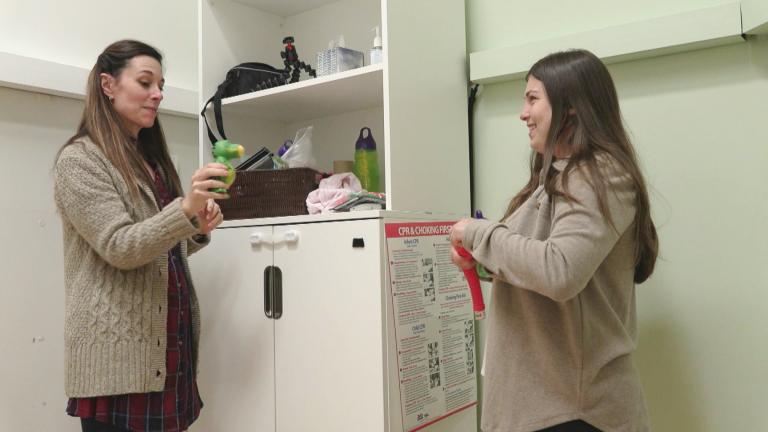 (Elliott Abel / Shirley Ryan AbilityLab)
(Elliott Abel / Shirley Ryan AbilityLab)
For patients who’ve had a stroke, rehabilitation is part of the road to recovery, but where that recovery takes place also plays a role.
“A lot of participants really recover well during the inpatient setting or when they’re in the hospital,” said Arun Jayaraman, director of the Max Nader Lab for Rehabilitation Technologies & Outcomes Research at the Shirley Ryan AbilityLab. “The biggest problem is a lot of these gains tend to drop off when they go home, and it’s very difficult to get it back because they’re probably not provided the same attention or quality of care (at home).”
Researchers are hoping to curb that drop-off with a new type of wearable electronic device that could allow health care providers to monitor patients at home and intervene at “the most ideal point in time,” said Jayaraman.
Early intervention is crucial to recovery. “The science says most of the recovery is attained within the first year,” he said, adding the first three to six months are especially critical.
Developed by Northwestern University engineering professor John Rogers, this new breed of sensors – called “stretchable electronics” – stick directly to the skin, move along with the body and provide detailed health metrics, including heart function, muscle activity and quality of sleep.
“Stretchable electronics allow us to see what is going on inside patients’ bodies at a level traditional wearables simply cannot achieve,” Rogers said in a statement. “The key is to make them as integrated as possible with the human body.”
Rogers’ latest device is a bandage-like throat sensor that measures patients’ swallowing ability and patterns of speech. It can help in the diagnosis and treatment of aphasia, a language disorder that occurs after a stroke. “People with aphasia have general communication problems,” said Leora Cherney, a research scientist at the Shirley Ryan AbilityLab and expert in aphasia treatment. “It impacts their interaction with other people and they often become very isolated.”
The tools traditionally used by speech-language pathologists to monitor patients’ speech and swallowing, such as microphones, can’t distinguish between patients’ voices and ambient noise.
“Our sensors solve that problem by measuring vibrations of the vocal chords,” Rogers said. “But they only work when worn directly on the throat, which is a very sensitive area of the skin. We developed novel materials for this sensor that bend and stretch with the body, minimizing discomfort to patients.”
The throat sensors also allow clinicians to track how frequently patients with aphasia are talking and use that data to set goals. “Not only are we as therapists getting the feedback, but the patients can get feedback as well ... and then they have goals to strive for,” said Cherney. “It can be very motivating for them.”
The throat sensors are used in conjunction with sensors on the limbs and chest to monitor stroke patients’ recovery process, which provides a quantitative, full-body picture of patients’ physical and physiological responses.
Because the sensors are wireless, patients can wear them after they’ve left the hospital, allowing clinicians to see how patients function in the real world.
“Talking with friends and family at home is a completely different dimension from what we do in therapy,” said Cherney. “Having a detailed understanding of patients’ communication habits outside of the clinic helps us develop better strategies with our patients to improve their speaking skills and speed up their recovery process.”
Data collected from the sensors will be presented in a dashboard accessible to patients and clinicians. It will send alerts when patients are underperforming on a certain metric and allow them to set and track progress toward their goals. “It allows us to do personalized medicine at the highest level,” Jayaraman said.
Contact Kristen Thometz: @kristenthometz | [email protected] | (773) 509-5452
Related stories:
 Forgotten, But Not Gone: Sea Slug Brains Show Traces of Lost Memories
Forgotten, But Not Gone: Sea Slug Brains Show Traces of Lost Memories
Feb. 12: Two Chicago-area researchers have uncovered what they think is the first piece of physical evidence showing that forgotten memories could still live on inside our brains.
 Woodpeckers Show Signs of Possible Brain Damage, New Study Finds
Woodpeckers Show Signs of Possible Brain Damage, New Study Finds
Feb. 2: Football players are often thought of as modern-day gladiators, but even the most hard-headed linebacker has nothing on the woodpecker, at least when it comes to sustaining blows to the noggin.
Nov. 12, 2013: Science catches up with science fiction as we talk to Professor John Rogers, the inventor of epidermal electronics -- tiny, bendy computer chips that can be placed on or in the human body to monitor critical health data.

 Skin Electronics
Skin Electronics





